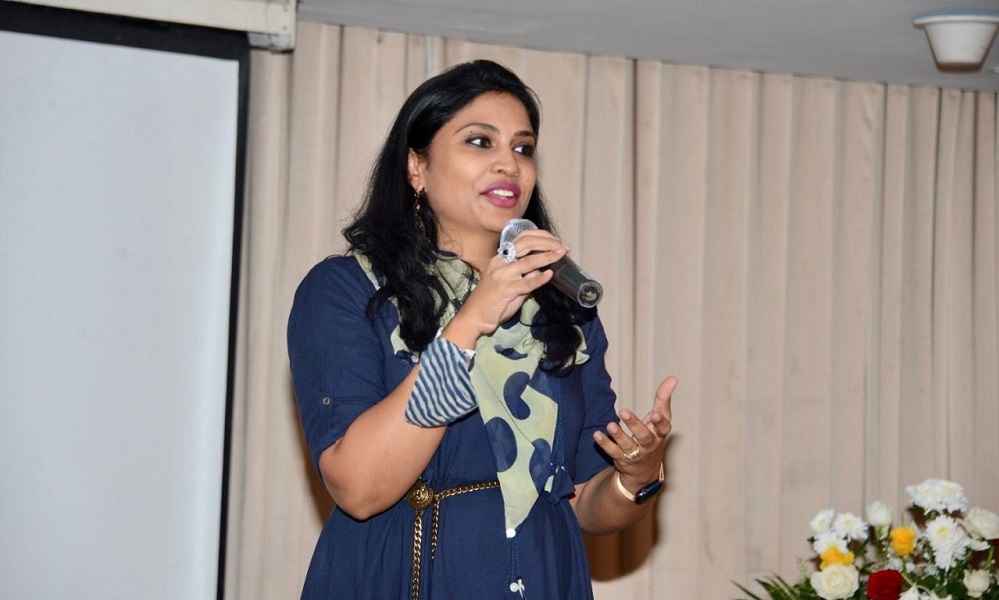The US $1 million Global Teacher Prize has been called the ‘Nobel Prize of Teaching’. Keisha Thorpe is the seventh winner of the annual prize presented by The Varkey Foundation, joining the honour roll alongside educators such as India’s own Ranjitsinh Disale. The 2021 top 50 shortlist was selected from over 8000 nominations and applications from 121 countries around the world and included two teachers flying the flag for India – Meghana Musunuri and Satyam Mishra.
In today’s article, Meghana Musunuri talks about her career and shares her favourite strategies and activities to help create a positive and engaging learning environment in which students can flourish.
Meghana Musunuri is a school leader and entrepreneur, recognised by Global Teacher Prize judges for her innovations in the areas of student-centric teaching approaches.
Musunuri founded the Fountainhead Global School & Junior College in 2001. A private school in Hyderabad, Fountainhead was started as a Kindergarten and new Grades were added every year. In 2020, the school welcomed its first cohort of Grade 10 students.
Talking about her reasons for starting a school in Hyderabad, Musunuri said: ‘I wasn’t able to freely ask questions to my teachers in high school. I didn’t want my students to feel the same way. They should know that they are not being judged in my classroom.’
She added that her high school experience taught her what ‘not to do as a teacher’ and her teaching experience in London helped her understand how children perceive the world at different ages.
‘A happy learning environment helps students to achieve desired academic results rather than putting them in stressful authoritarian classrooms. I wanted to create a classroom environment where students can readily seek my assistance, ask questions, and share their problems.’
Musunuri motivates students to focus on ‘efforts’ rather than the ‘outcomes’ (scores) of their efforts. She believes in connecting classroom lessons to the real world and accepting that she may not have answers to all questions from students.
‘The role of teachers needs to change in this age of learning when students can easily access information on the internet. Teachers should explain reasons (why!) behind things, so that students perceive them as valuable contributors to their learning.’
Musunuri says the activities outlined below have helped her students to develop empathy, understand diversity, and collaborate – which has, in turn, had a positive impact on their academic outcomes.
Five strategies to foster a positive learning environment
Activity 1: Let us earn to complain
Age group: 8-9 years
Some school students often seek attention from teachers by complaining about classmates, about small things. In such situations, they can instead be asked to share five positive points about the classmate before they may complain. Recalling incidents where a friend might have helped to find a book or homework mostly discourages students from complaining. This activity helps children to develop empathy, positivity, and teaches them to not let little things irk them. The same exercise can be replicated with teachers and parents as participants.
Activity 2: Walk in the other person’s shoes
Age group: 10-11 years
In this activity, I ask students to exchange their shoes with friends. This exercise helps children to realise that every individual has different strengths and challenges. This is a useful exercise for building empathy, which enables mutual trust and rapport in the classroom.
Activity 3: Invite a baby to the classroom
Age group: 13-15 years
The teacher invites a student’s infant sibling to the classroom. Students observe that babies take time to learn to walk or talk, and all babies do not learn at the same pace. This, in turn, helps students to understand that, just like the baby, their friends and teachers also have limitations – some friends may be late at learning to read and others might find writing difficult. This exercise also helps teenage students to learn persistence when they realise that they did not give up trying as a child.
Activity 4: Reviving a lake
Age group: Whole school
A community activity such as reviving a 15-acre lake helped Musunuri’s students to develop key workplace skills: collaboration with stakeholders, ownership of resources, presentation, and budget preparation. She says this activity can be used to develop ‘depth of knowledge’ among students, through a four-stage process – textbook learning, experiment, research, and application.
Activity 5: Bringing India together
Age group: Whole school
This is a cultural exchange programme where students of one state interact with students of another state. They exchange knowledge on culture, culinary differences, arts, history, and current affairs to learn key aspects of cultural diversity, cultural hegemony, and inclusion.
What steps do you take to develop a positive learning environment in your own classroom and school?
In this article, Meghana Musunuri speaks about connecting classroom lessons to the real world. Thinking about a forthcoming unit of work in your own subject area, how could you connect learning activities to the real world? What resources will you need?


